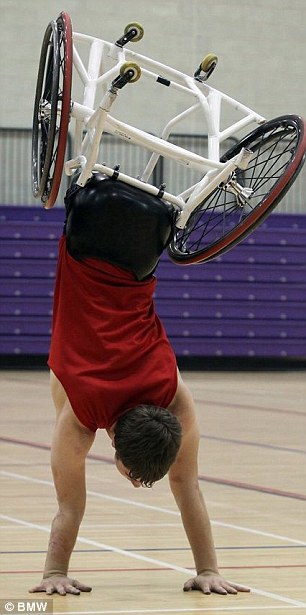Paralympics Athletes Benefit from Additive Manufacturing

BMW designed Paralympics basketball chair. Courtesy of BMW.
Latest News
September 6, 2012
The sports industry has started to take a serious look at how to use additive manufacturing (AM) to improve its products. 3D printed shoes aren’t a new idea, but some experts talk about using AM systems to customize running shoes for track conditions as little as an hour before the runner heads to the starting block.
AM (along with other advances in technology) has the potential to give what might be deemed an unfair advantage to some athletes (check out Engineering on the Edge for more details), particularly those with bigger expense accounts. It isn’t all bad news, though, AM has had a positive impact for athletes in the Paralympics.
Britain’s Paralympics basketball team comes to the court in high-tech wheelchairs designed by BMW. The engineers use knowledge gained from working in motor sports to create chairs that are custom made for each athlete. These specialty wheelchairs are lighter, faster and more maneuverable than the models most people are used to seeing.
The athletes are 3D scanned while sitting to produce a computer image with an accuracy of within 1mm. A CAD design was created using the scans to make a custom seat for each athlete. The CAD designs were then fed into an EOS machine (the EOSINT P 395) which printed out the new seats.
Using AM to create new chairs for the team had other benefits. The “close fit” of the new 3D printed seats left more room in the chairs to reduce weight in other areas. In turn, the improved lighter weight of the chairs proved easier for the athletes to maneuver. Each seat required two days to print out using laser sintering and was subsequently tested at British Aerospace’s wind tunnel in Wharton.
“The new seat has improved my game enormously. The stability gives me the ability to turn quickly both going right and left, which I was unable to do before,” said player Ade Orogbemi. “The extra speed it gives me around the court makes it easier to defend against the best attacking sides in the world to give us that unique advantage. I believe it is allowing me to play my best ever basketball.”
Every advance made in wheelchair technology for the Paralympics games will eventually become available for the public. Lighter wheelchairs may well prove a boon for an aging population and their caretakers.
“The Paralympics is wedded to science and technology. In the Paralympics charter, science is a huge part of it. It’s all about enhancement, it’s all about making people better,” says Dr. David James of Sheffield Hallam University’s Centre for Sports Engineering Research. “We use technologies from car design, Formula One, aerospace. Each Paralympics, you’ll see an advance on the technologies being used. We’re trying to make things better.”
Below you’ll find a video about Britain’s Paralympics basketball team.
Source: Daily Mail
Subscribe to our FREE magazine, FREE email newsletters or both!
Latest News
About the Author
John NewmanJohn Newman is a Digital Engineering contributor who focuses on 3D printing. Contact him via [email protected] and read his posts on Rapid Ready Technology.
Follow DE






